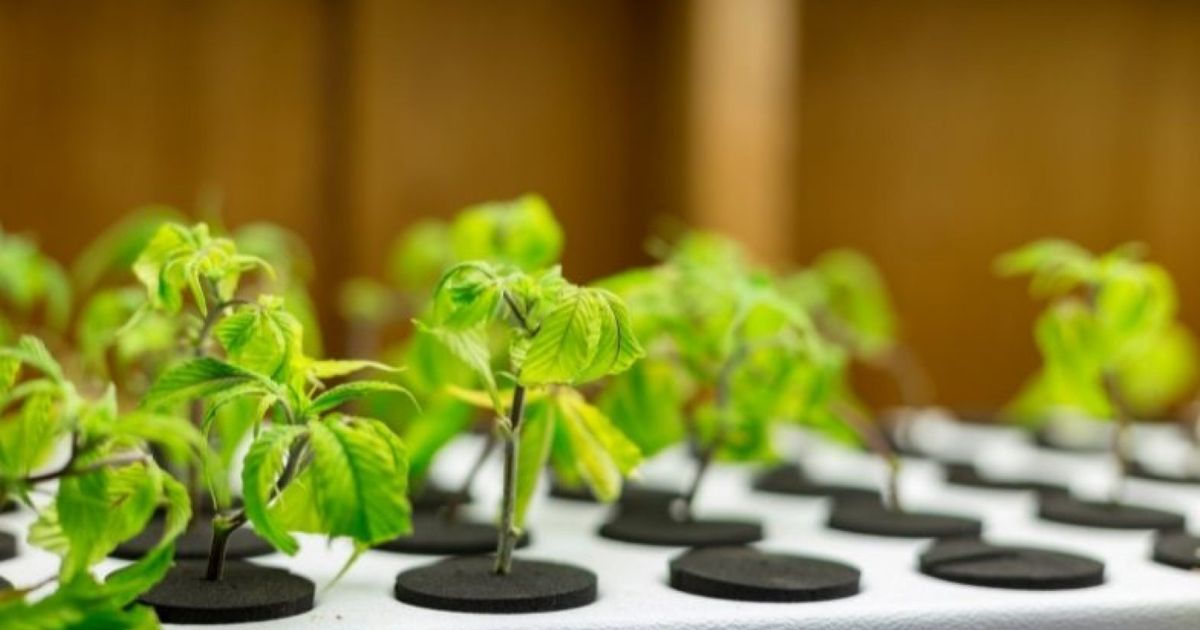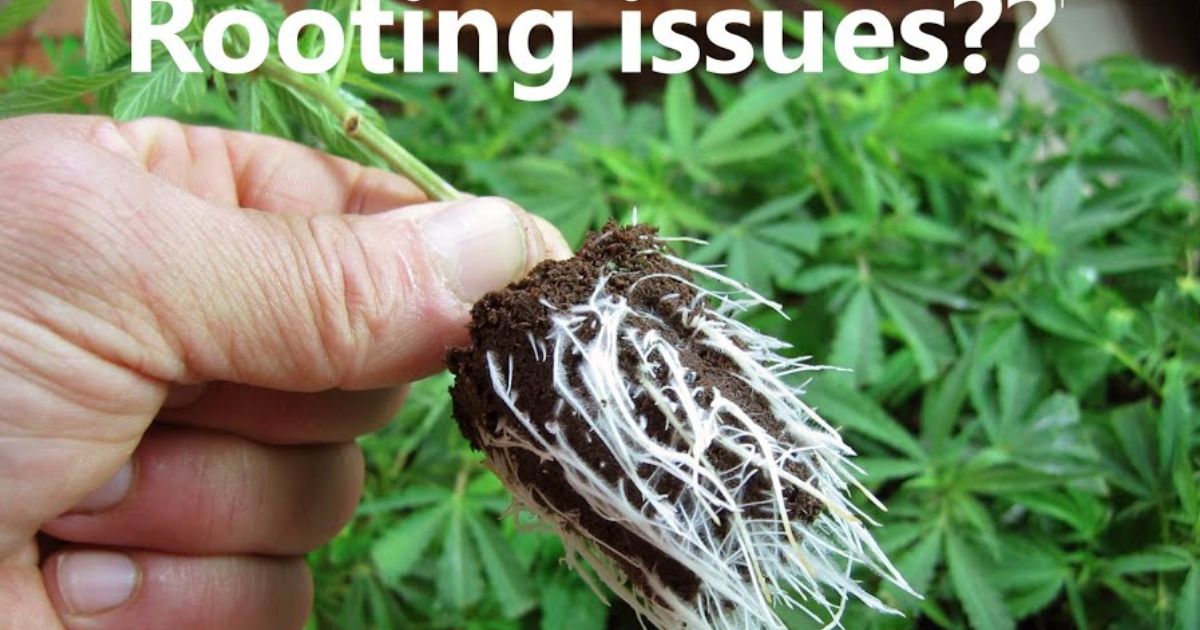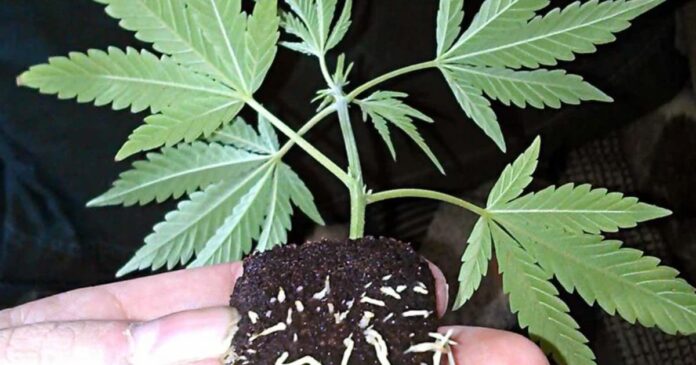Cloning plants is one of the fastest and most reliable ways to produce new, healthy plants that are exact genetic copies of the original. Whether you’re growing herbs, houseplants, or high-value crops, getting your clones to root quickly is essential for success. Fast rooting means less time waiting for growth, a lower risk of disease, and more vigorous plants that can transition smoothly to their next growth stage.
However, achieving quick and healthy root development isn’t just about luck; it’s about understanding what your cuttings need and creating the right environment. In this guide, we’ll explore proven methods and practical tips to help your clones root faster, from selecting the right cuttings to maintaining ideal humidity, light, and temperature.By doing these easy yet efficient actions, how to get clones to root fast you can drastically improve your cloning success rate and enjoy thriving new plants in record time.
Why Cloning Matters: The Benefits of Fast Rooting
Before we get hands-on, let’s talk about why you should care about speeding up rooting. Cloning isn’t just a shortcut; it’s a superpower for any gardener. First, it preserves elite genetics. Imagine you’ve nurtured a tomato plant that yields bumper crops of sweet, crack-resistant fruit or a cannabis strain with exceptional potency and resilience. Cloning lets you replicate it indefinitely, without the lottery of seed variation.Economically, clones are a steal. Seeds cost money, How to Cannabis Cloning: Step-by-Step Guide for Healthy Plants and not all germinate. Clones? They’re free once you have a mother plant, and they mature faster, often skipping the fragile seedling stage entirely. In commercial ops, this means tighter turnaround times: root a batch in 7 days, transplant, and harvest sooner to maximize space and profits.

Environmentally, cloning promotes sustainability. It reduces the need for new stock from nurseries, cutting down on transport emissions and packaging waste. Plus, fast rooting minimizes resource use by reducing the water, electricity, and space wasted on failed attempts.The key to unlocking these perks? Hormonal balance and stress management. Cuttings lack roots, so they can’t uptake water or nutrients efficiently. They rely on stored energy in leaves and stems, but transpiration (water loss through leaves) can dehydrate them quickly. Fast rooting tips focus on mimicking the mother plant’s conditions while stimulating auxin production, a natural hormone that triggers root growth. Get this right, and your clones won’t just survive; they’ll thrive.
Preparing the Perfect Mother Plant
Healthy clones start with a stellar mother. Think of her as the blueprint: if she’s stressed, pest-ridden, or nutrient-deficient, her offspring will inherit those woes. Aim to maintain mother plants in perpetual vegetative growth under 18-24 hours of light daily to keep them stocky and hormone-rich.
Selecting the Right Mother: Choose vigorous plants at least 5-6 weeks old, with lush foliage and no signs of flowering (which diverts energy from roots). For cannabis or tomatoes, prioritize females with proven traits: high yields, disease resistance, and fast growth. Rotate mothers every 4 months to prevent woody stems or accumulated pests. Feed them a balanced N-P-K diet (like 20-20-20) to build internal reserves. Clones from well-fed moms root 20-30% faster.
Pre-Cutting Care: Hydrate thoroughly 24 hours before harvest. Turgid (firm) stems mean plump cells full of water and auxins. Scout for ideal cutting sites: lower branches, where natural rooting hormones concentrate. These “auxin hotspots” can halve rooting time compared to top-growth tips. Cannabis Leaf Pics : Types Benefits and Uses Avoid flowering plants; their cuttings take 2-3 times longer to root due to hormonal shifts.
Taking the Ideal Cutting
The cut is crucial; botch it,planting clones and your clone’s doomed before it hits the medium. Timing matters: clone in the morning when plants are hydrated, or during active veg for peak hormone levels.
Choosing the Stem: Go for 4-6 inch branches with 3-5 nodes (leaf sets). Bigger is better for vigour. Opt for multi-site branches over skinny singles; they’ll support larger root systems and faster recovery. From the lower half of the mother for those hormone perks. Straight, healthy stems without flowers or yellowing leaves are prime.
The Cut Technique: Use sterilized razor blades, scalpels, or scissors to crush cells and invite rot. Cut at a 45-degree angle directly beneath a node. To maximize surface area for root emergence (up to 50% more exposure). Immediately submerge in room-temperature pH-balanced water (5.8-6.5) to prevent air bubbles from blocking uptake. For extra speed, lightly scrape the outer stem layer or split the base lengthwise by 0.5 inches. This exposes cambium tissue, boosting root initiation by 20-40% in some species.
Trim leaves aggressively: Remove lower fans entirely, and clip upper ones by half to reduce transpiration by 70% while preserving photosynthesis. This forces energy downward. Aim for 2-4 leaves total, enough for energy, not overload.
Handle gently: No bruising. Ultimate Guide to Weed Bubbler: Everything You Need to Know Process 5-10 cuttings at a time to keep them fresh. With precise cuts, your cloning a plant are primed for rapid rooting.
Boosting Roots with Hormones and Media

Now, the magic sauce: rooting hormones and the right medium. Without roots, cloning plants starve; hormones bridge that gap.
Rooting Hormones: Auxins like IBA or NAA are game-changers, mimicking natural signals to sprout roots in days. Dip the cut end in gel (e.g., Clonex) or powder for 5-10 seconds. Gels seal better, powders absorb fast. Studies show treated clones root 2-3x faster, with 80-95% success. For organics, try willow water (natural auxin) or coconut milk (cytokinins for cell division). Avoid overuse; excess burns tissue.
Choosing the Medium: Water works for easy plants like pothos (roots in 2 weeks), but for finicky ones like cannabis, solid mediums are better, clones look healthy but no roots offering better oxygenation and less rot. Top picks:
- Rockwool Cubes: pH to 5.5, soak in water. Sterile, airy roots in 7-10 days. Great for hydro transitions.
- Aerating Plugs (e.g., Jiffy RediRooter): Peat-coir-perlite mix with air pockets; stimulates downward rooting by forcing moisture search.
- Coco Coir or Pro-Mix: Soilless, well-draining. charak neo tablet uses in hindi Add perlite for aeration. Roots in 8-12 days.
Insert the dipped cutting 1-2 inches deep, firming gently. Bottom-watering only affects top moisture, stages of clone growth drowning stems and slowing roots by encouraging shallow growth. Keep the medium at 75-80°F for enzyme activity.
Bonus: Inoculate with mycorrhizae or Trichoderma (e.g., Voodoo Juice) for explosive root growth up to 700% more mass.
Creating the Optimal Environment
The environment is the unsung hero of fast rooting. Kush Plant: Flavor Effects and Benefits Clones crave a “womb-like” dome: high humidity, stable temps, and gentle light.
Humidity and VPD: Aim for 80-100% RH initially to curb wilting. Use a propagation dome or plastic wrap. Gradually vent to 70% over days to toughen cuticles. Vapour Pressure Deficit (VPD) of 0.4-0.8 kPa balances transpiration without stress. Mist leaves lightly (not drenching) to maintain turgor, but sparing over-misting, as it dilutes leaf nutrients and delays rooting.
Temperature: Root zone at 72-78°F (warmer speeds metabolism), air at 70-75°F. Bottom heat mats work wonders, but avoid temperatures above 85°F to prevent rot. Night drops to 65°F, mimicking nature and spurring hormones.
Light: 18-24 hours of low-intensity (100-300 PPFD) blue-spectrum light. T5 fluorescents or CFLs at 12-18 inches prevent stretching while promoting compact roots. LEDs with cool tones (5000K) are efficient and low-heat. Too much light? Etiolation and burn. Too little? Weak, leggy growth.
Airflow: Gentle fans prevent mould but avoid direct blasts; Cannabis Flowering Stages – Guide To Weed Budding Week By Week clones hate wind shear. CO2 at ambient levels suffices, but enriching to 800ppm can accelerate by 10-15%.
Monitor with a hygrometer/thermometer. Dial this in, and roots emerge in under a week.
Daily Care and Monitoring Progress
Patience pays, but vigilance ensures speed. Check daily without disturbing.
Watering: Bottom-feed every 2-3 days, saturating until runoff, then draining. Let the top dry slightly to pull roots down. pH 5.8-6.2; EC low (0.2-0.4) to avoid burn. No nutes until roots show plain water or dilute kelp for vitamins.
Signs of Success: Day 3-5: Callus forms at base (white nub). Day 7: Tiny white roots peek out. Tug gently; resistance means anchored. How To Choose The Best Cannabis Accessories: A Comprehensive Guide For soil, peek after 10 days by drying slightly.
Feeding Transition: Once rooted (0.5-1 inch), introduce half-strength veg nutes (high N). Enzymes like Sensizym keep roots clean. Harden off by reducing humidity over 3-5 days.
Track batches in a journal: strain, date, conditions. Patterns emerge for tweaking.
Troubleshooting: Common Pitfalls and Fixes
Even pros hit snags. Here’s how to dodge them:
- Wilting: Too low RH or heat. Boost dome humidity; mist stems.
- Rot: Overwet medium or dirty tools. Sterilize everything; use H2O2 dips.
- No Roots After 14 Days: Weak mother or wrong hormone. Retry with fresh cuts from lower branches; add microbes.
- Yellowing Leaves: Light stress or nutrient lock. Dim lights; flush medium.
- Slow Starters: Some strains (e.g., indicas) lag in patience, or select sativas for speed.
Success rate under 70%? Auditing your setup, मन्मथ रस टैबलेट के फायदे sterility, and VPD is a culprit 80% of the time.
Advanced Techniques for Ultra-Fast Rooting

Level up with these pro hacks:
- Aeroponics: Mist roots in air within 3-5 days, but it’s a pricey setup.
- Monstercropping: Clone from flowering nodes for bushy growth post-root.
- CO2 Supplementation: 1000ppm under domes for 15% faster initiation.
- LED Enhancers: Far-red light pulses to spike auxin
Conclusion
Getting clones to root fast comes down to providing the perfect balance of care, environment, and technique. From selecting healthy parent plants and using fresh cuttings to maintaining proper humidity, warmth, and lighting, every detail matters. When you use rooting hormones, keep your medium moist (not soaked) and ensure steady airflow. Your clones will develop strong, white roots much faster.
Remember, patience and consistency are key. Even the best cloning setup needs a few days to show results. By following these proven tips, you’ll not only speed up the rooting process but also produce vigorous, healthy clones that grow into robust, productive plants.
FAQ
How long do clones usually take to root?
Most plant clones take about 7 to 14 days to develop roots, depending on the plant type, environment, and care. Some may root faster in optimal humidity and temperature conditions.
Should I keep clones in the dark at first?
No. Clones need low-intensity light right from the start to encourage root growth. Keep them under gentle fluorescent or LED lights for about 18 hours a day.
Can I clone without using rooting hormone?
Yes, it’s possible, but rooting hormones speed up root development and increase success rates. If you prefer natural options, try aloe vera gel, honey, or willow water.
Why are my clones wilting instead of rooting?
Wilting usually happens due to low humidity, excessive light, or dehydration. Keep the humidity around 70–80%, maintain moderate warmth, and mist your clones regularly.
When should I transplant my clones?
When the roots are 1-2 inches long, transplant. And visible through the medium. At this stage, your clones are strong enough to handle new soil or hydroponic systems.




